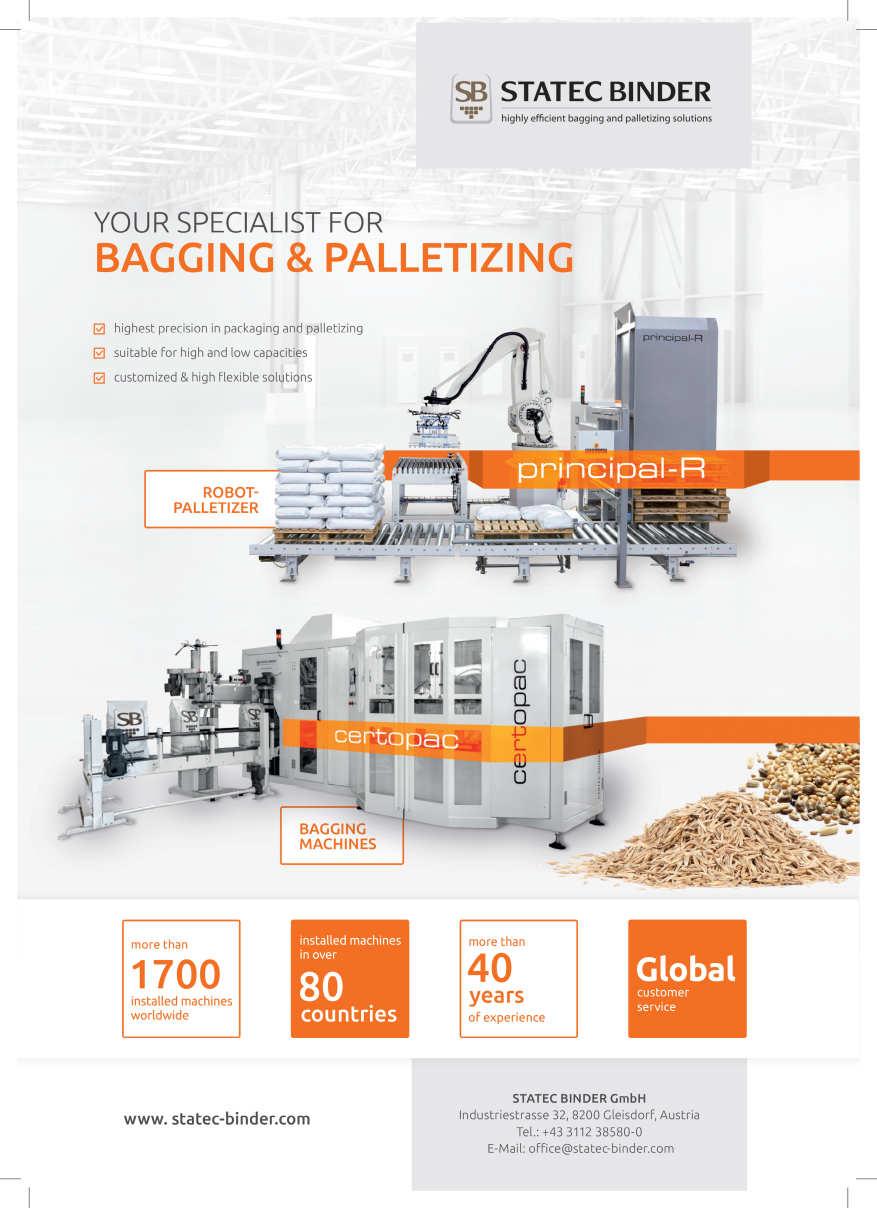
3 minute read
Bio-based packaging solutions for a better tomorrow

FOOD LOSS AND waste reduction
(FWL) is a global concern, reflected in the 2030 Agenda for Sustainable Development, particularly Goal 12, which highlights responsible consumption and production.
According to a study published in Springer, food loss reduction must accordingly complement increasing crop productivity toward sustainably feeding increasing populations. This is especially important in regions of sub-Saharan Africa, where food insecurity is at its peak and the population is predicted to double by 2050. According to an FAO report published in 2019, 15.917.2% of the food produced annually is lost, with losses in cereals and pulses mainly occuring during on-farm post harvest operations storage, processing and packaging.

Need for bio-based packaging
The use of bio-based packaging is one of the best ways of preventing damage during transportation, while also avoiding subsequent degradation.
An MDPI report mentions that packaging solutions have real advantages in terms of efficiency, initial investment cost and profitability. In addition, the use of agricultural waste for the design of these packaging solutions would valorise agricultural waste. This valorisation in addition to reducing losses would be an additional source of income for farmers and local communities. They also present advantages in terms of preserving nature and the health of consumers.
Innofood Africa, a project that focuses on addressing the key bottlenecks of African food value chains, has investigated crop sidestreams and food wastes for their suitability for bio-based products. The model packaging created from agro waste is believed to be suitable for export markets and create a new source of income for farmers, thereby enabling them to become more resilient.
Sidestream utilisation
An evaluation of sidestream availability across various regions of Africa namely, Uganda, South Africa, Kenya and Ethiopia, showed the largest availability in finger millet, cowpea, orange fleshed sweet potatoes, teff and faba bean respectively. This meant that sidestream containing solutions could easily replace imported plastic and rubber products, while also being used to create export products.
The Innofood Africa project, in its report, mentions the following three practical recommendations to enable sidestream utilisation:
● Immediate removal of sidestreams from fields, shortly after harvesting
● Preventing microbiological activity on sidestreams by performing drying
● Discussions with plastic processors regarding desired quality becomes essential, given the influence of sidestream milling on the quality of end products
Bio-based food packaging equipment
Single-screw extruders and twin-screw extruders are the two main types of extrusion processing that are used for compounding and polymer blending. Out of the two, twin-screw extruders have been found to play a more important role in capacity increase.
In addition, morphology of polymer blends is also known to influence their biodegradation rate. One important aspect of biopolymer processing is controlling humidity. High humidity during polymer extrusion increases melt fluidity due to chain scission, which is why drying sections are implemented in industrial plants. For extrusion, pellets of biopolyesters are usually heated in the presence of a dried air flow with a low dew point, while stirring the melting pellets to avoid undesired agglomeration.
Characteristics of food packaging materials manufactured by agricultural biomass
A 2021 research project was successfully able to develop a biodegradable food packaging material based on cellulosic fibres obtained from maize husk and sisal, and cellulose pulp obtained from maize husk. Results from mechanical testing indicated that the mechanical properties of the biocomposite materials were related to the composition of the types of fibres used. Tear and tensile strength was found to increase with the rising proportions of sisal fibres in the biocomposite material. Furthermore, the study observed that the biocomposite material achieved good abrasion resistance that permitted its usability in food packaging without necessarily losing its properties.
This meant that that the food packaging material developed had the potential to effectively replace non-renewable resources used in food packaging industries.
For the production of rigid plastic containers, either injection molding or thermoforming are used. The temperature of the mold, the holding pressure and time are the parameters that are most important to control. Biopolymers such as PLA and PHB can crystallise during the holding step, so the temperature of the mold and the holding time influence the crystalline morphology of the material. In turn, the amount and distribution of crystals in the material influence the material’s properties. Contrary to injection molding, trays, plastic cups, blisters, and jars are produced by thermoforming. Polymer film, produced by flat die extrusion, with a thickness in the range of 50–300 µm is used for the thermoforming process. The material is usually heated by an infrared heater above its glass transition temperature but below its melting point to obtain a softened sheet. A mold is then inserted (or a vacuum is applied), which brings the softened sheet into the desired shape. h










